Thought-provoking and character-forming themes from the movies
In my growing up days, without a TV service in my neck of the woods,
much time was spent in cinemas because they were an important window on
the world outside. Indeed, some might even recall the accusation of
having a
misspent youth from being a frequent cinema patron. Regardless, to the young
enquiring mind, some of the better made motion pictures posed both
speculative and practical questions about one's world.
I nominate three motion pictures (see Footnote 1) which were influential in my character-building:
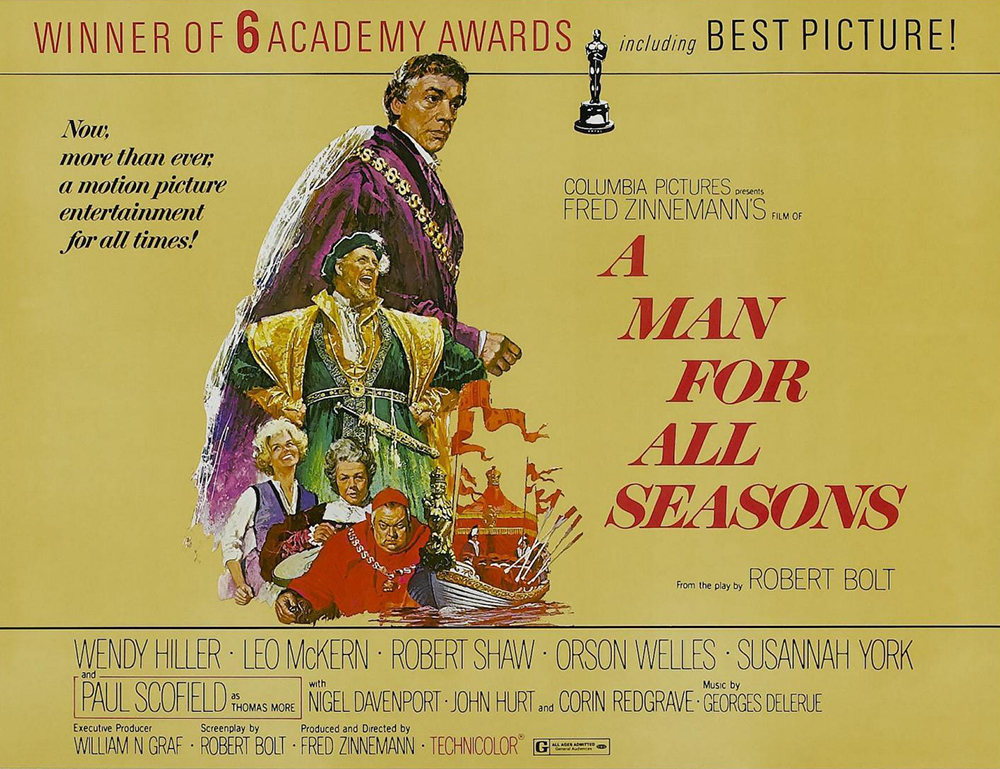
Released: 1966 (first watched in 1969)
Director: Fred Zimmermann
Winner of 6 Academy Awards including for "Best Picture"
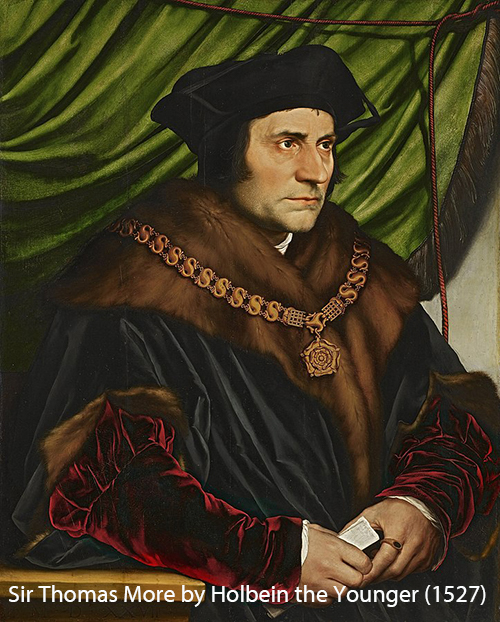 This motion
picture deals with the final years (1529 - 1535) of Sir Thomas More,
Lord High Chancellor of England (played by Paul Scofield who won the
Academy Award for Best Actor in a Leading Role for this film).
This motion
picture deals with the final years (1529 - 1535) of Sir Thomas More,
Lord High Chancellor of England (played by Paul Scofield who won the
Academy Award for Best Actor in a Leading Role for this film).
Sir Thomas grapples with his conscience and the authority of his king,
Henry VIII (see Footnote 2). The king (played by Robert Shaw) wanted him to
sanction the
annulment of his marriage to his then Queen (Catherine of Aragon) so
that he can marry Anne Boleyn, as well as take an Oath of Supremacy
acknowledging the King as the Supreme Head of the Church of England (this
was the period in which the English church broke away from Papal Rome).
Sir Thomas' conscience and Catholic faith did not allow him to recognise
Henry VIII's authority above that of the Pope in Rome. For this,
Sir Thomas was convicted of treason and was sentenced to be beheaded (a
common fate of those who crossed Henry VIII).
Here, the moral dilemma is one of having to choose between what one's
conscience guides us to do, and what an authority has decided. In my
career, I have stood at this point before many a bridge - only that in
all instances it did not involve regal authority but rather
that of clowns in normal attire (sans their circus costumes).
Sir Thomas is
venerated as a Catholic martyr and was canonized a saint in 1935 by Pope
Pius XI. If you have ever used the word Utopia then you may know
that it was a word coined by Sir Thomas in his book of the same
name in which he described
the utopian political system of an imaginary island state.
In 1975,
without
prior design and almost by accident, I entered Saint Thomas More College, a
residential hall at the University of Western Australia in Perth. That
was the start of a three-year enriching stay at the college. I almost
returned to STMC in 1980 as a Residential Tutor but chose Currie Hall
next door instead because the latter offered a double room while STMC
only had single rooms for Tutors.
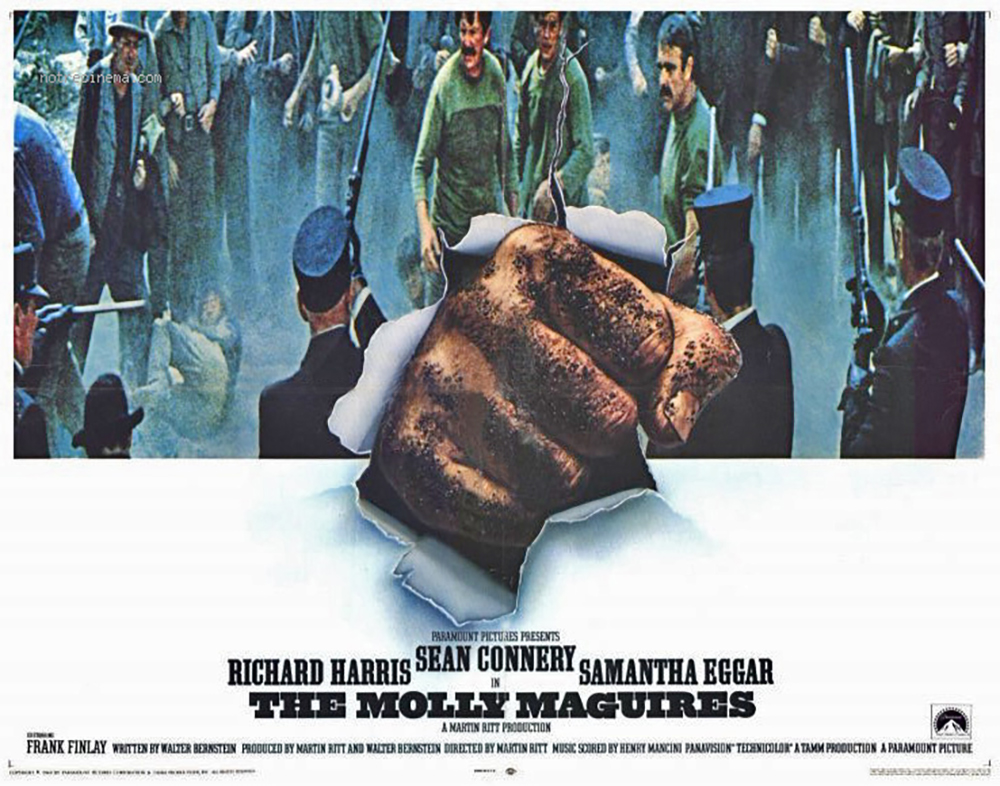
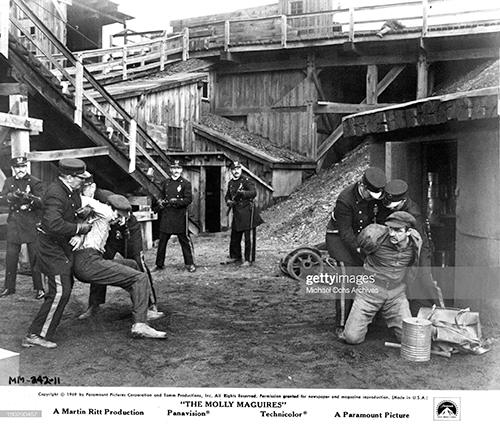
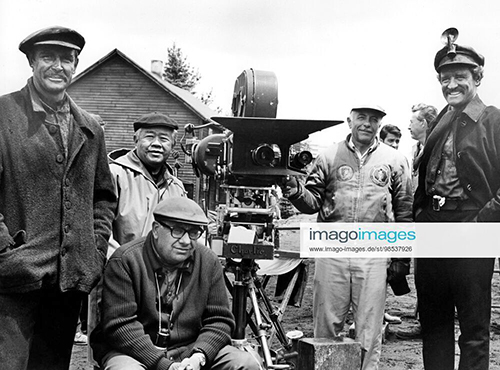 I also remember this movie for its cinematography by James Wong Howe. He
was able to convey the grim and stark reality of the hard conditions in
the mining town and mines by the choice of color palette. The director,
Martin Ritt wanted to make the film in Black and White but the studio
did not give its approval. Wong was able to give a B&W effect by the
strong use of greys and a muted palette to convey a gritty atmosphere. I
was also intrigued by evidence of a Chinese person (he was born in Guandong, China) making
good in Hollywood (he won two Academy awards and eight nominations for his cinematography).
I also remember this movie for its cinematography by James Wong Howe. He
was able to convey the grim and stark reality of the hard conditions in
the mining town and mines by the choice of color palette. The director,
Martin Ritt wanted to make the film in Black and White but the studio
did not give its approval. Wong was able to give a B&W effect by the
strong use of greys and a muted palette to convey a gritty atmosphere. I
was also intrigued by evidence of a Chinese person (he was born in Guandong, China) making
good in Hollywood (he won two Academy awards and eight nominations for his cinematography).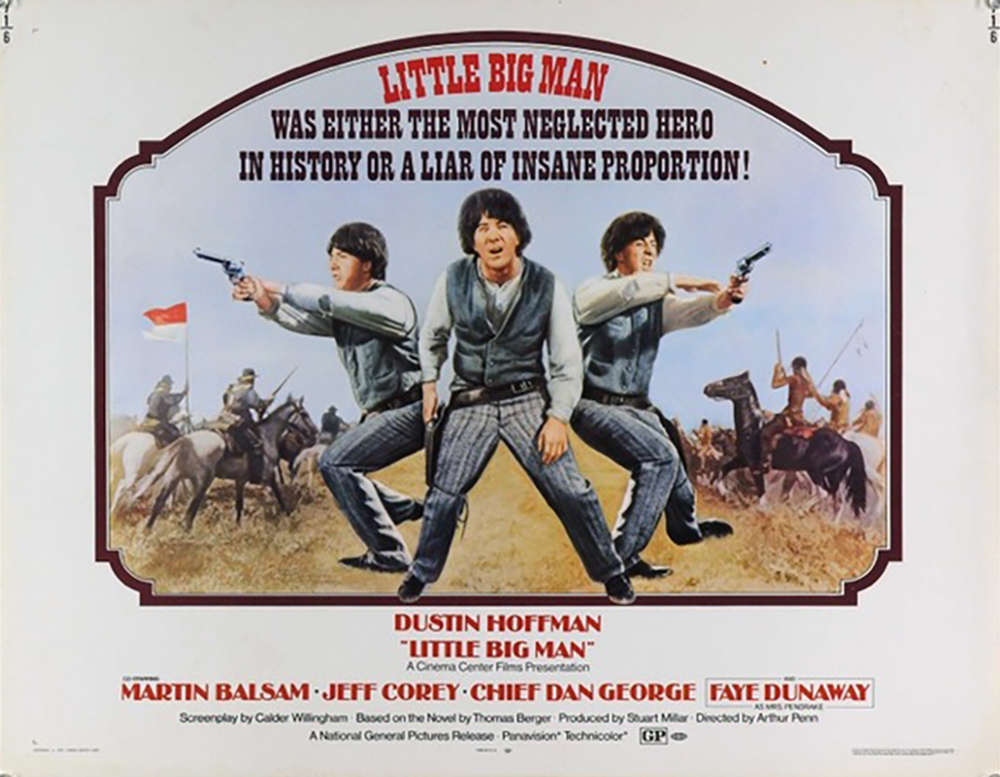
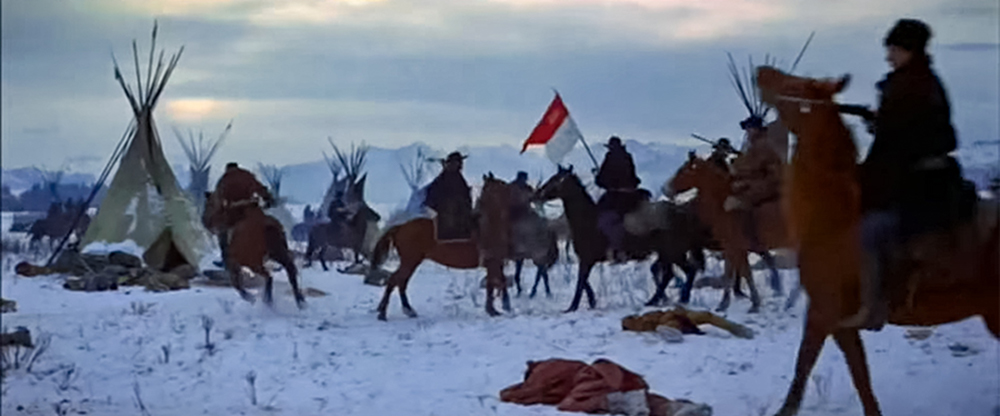
 The
depiction of cowboys or US soldiers in this instance as anything but good in a US
movie was sobering and mindset changing. But it made it easier to
believe the real story behind the 1968 My Lai massacre in South Vietnam where 504
women, children and old men were slaughtered by US army soldiers (see
Footnote 4).
The
depiction of cowboys or US soldiers in this instance as anything but good in a US
movie was sobering and mindset changing. But it made it easier to
believe the real story behind the 1968 My Lai massacre in South Vietnam where 504
women, children and old men were slaughtered by US army soldiers (see
Footnote 4).